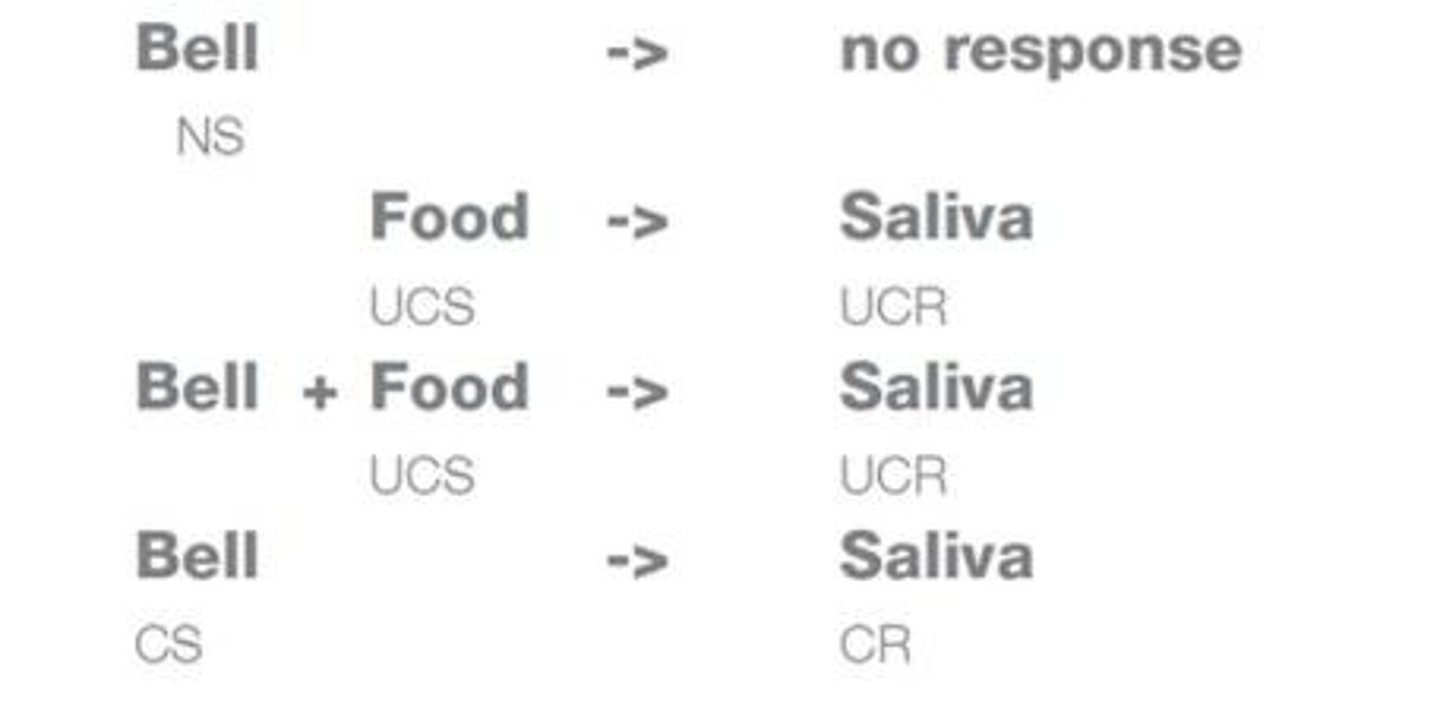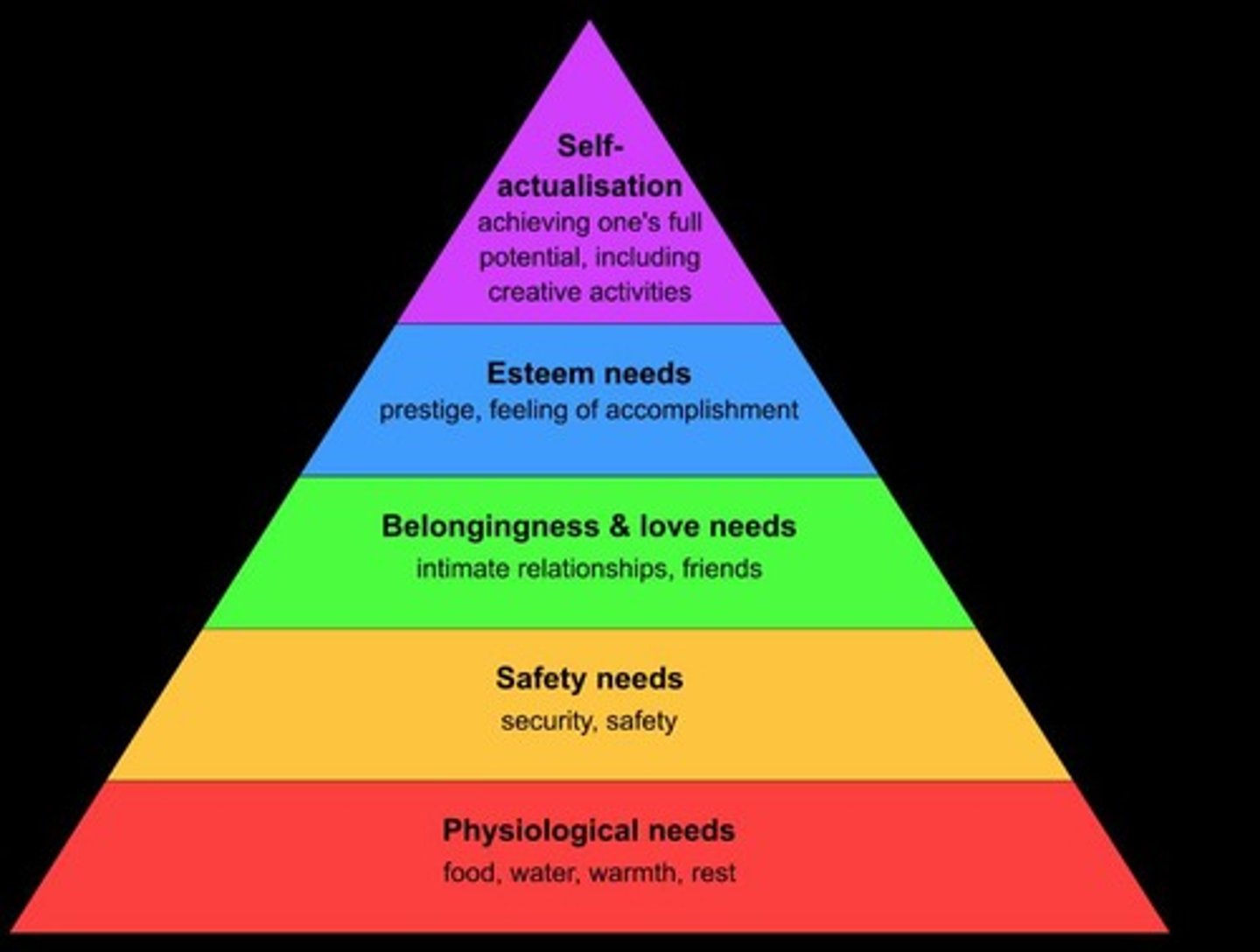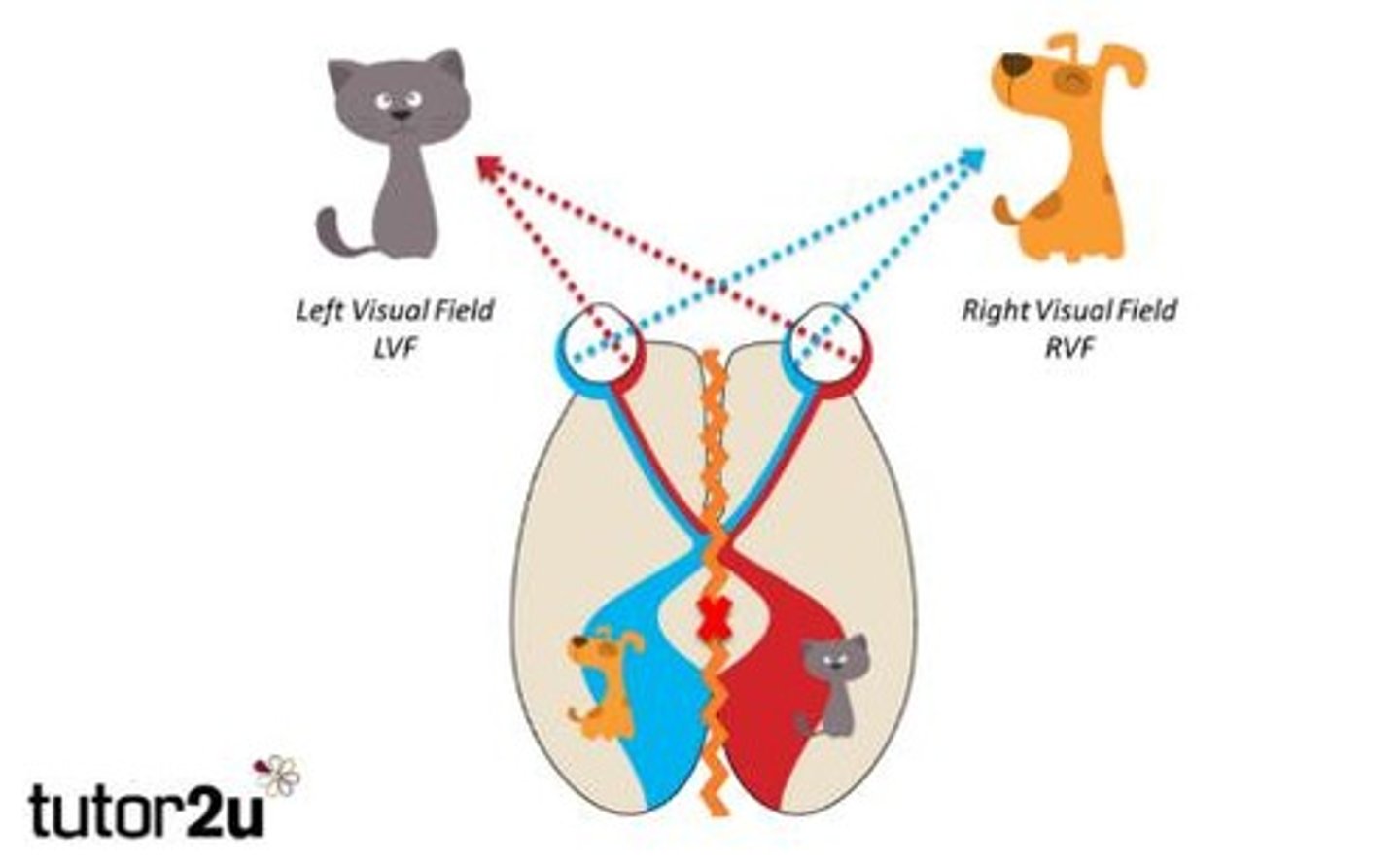research for ppr2
1/78
Earn XP
Name | Mastery | Learn | Test | Matching | Spaced |
|---|
No study sessions yet.
79 Terms
Who is considered the father of experimental psychology?
Wilhelm Wundt
What significant laboratory did Wundt establish in 1879?
The first laboratory dedicated to experimental psychology at Leipzig University.
What technique did Wundt develop to study mental processes?
Introspection, which involves examining one's own thoughts and reporting inner experiences.
What is a major limitation of Wundt's structuralist approach?
It relied on non-observable responses, making it difficult to establish cause and effect.
What is classical conditioning?
A type of learning progress where an existing involuntary reflex response becomes associated with a new stimulus, eliciting a consitioned response

What experiment is Pavlov famous for?
The experiment with dogs, where he measured salivation in response to a bell paired with food.
What did Watson and Raynor's experiment with Little Albert demonstrate?
Conditioned emotional responses, showing that fear can be learned through classical conditioning.
What practical application arose from understanding classical conditioning?
Systematic desensitization, a therapy to reduce phobias by gradually replacing fear responses with calm feelings.
What is operant conditioning?
A learning process where behavior is modified by reinforcement or punishment.
What device did Skinner create to study operant conditioning?
The Skinner box, which allowed control over the environment and measurement of behavior.
What is positive reinforcement in operant conditioning?
Providing a reward to increase the likelihood of a behavior being repeated.
What is negative reinforcement in operant conditioning?
Removing an unpleasant stimulus to increase the likelihood of a behavior being repeated.
What criticism is often leveled at operant conditioning?
It is deterministic due to failing to consider free will and cognitive processes in behavior. This suggests that behavior is solely controlled by external stimuli, ignoring individual choice.
What evidence supports the biological approach to explaining human behavior?
Research showing higher concordance rates of OCD in identical twins compared to non-identical twins.
What did Nestadt et al. (2010) find regarding OCD in twins?
68% of identical twins both have OCD compared to 31% of non-identical twins.
What is the significance of Grootheest et al.'s findings on MZ twins?
They found concordance rates of 45-65% for MZ twins, indicating a genetic link to OCD.
What is a limitation of using animal studies in conditioning research?
Generalising findings from animals to humans can be problematic due to the complex human emotions and thought process
What is the role of practical applications in the behaviourist approach: operant conditioning?
Understanding conditioning has led to effective therapies, such as behaviour modification in schools and prisons.
What is the main focus of the cognitive approach in psychology?
To understand mental processes such as perception, memory, and problem-solving.
How did Wundt's focus on introspection influence modern psychology?
It laid the groundwork for the cognitive approach by emphasizing the study of mental processes.
What is the significance of empirical evidence in psychology?
It provides a valid basis for understanding behavior through observable and measurable data.
What is the impact of systematic desensitization in treating phobias?
It helps patients gradually confront fears in a controlled manner, leading to reduced anxiety.
What did Hu (2006) find regarding serotonin levels in OCD sufferers?
Serotonin levels were lower in OCD patients, supporting the idea of low serotonin being associated with the disorder.
What experimental method did Dement and Kleitmann use to study sleep?
They used EEGs to measure brain activity during sleep, finding that REM occurs during deep sleep.
What is a practical application of the biological approach in treating OCD?
The use of SSRIs (Selective Serotonin Reuptake Inhibitors)
Criticism of the biological approach
Biological reductionism and determinism, as they oversimplify complex human behaviours, traits and mental processes by explaining them solely in terms of biological factors
What was the aim of Bandura's study on social learning theory?
examine the role of a model on influencing an observer’s behaviour.
What was the demographic of participants in Bandura's study?
36 male and 36 female participants aged 37-69 months, with a mean age of just over 4 years.
What behavior did children exhibit after observing an aggressive model in Bandura's study?
Children who observed aggressive behavior acted more aggressively themselves.
How did the sex of the model influence children's behavior in Bandura's study?
Boys acted more aggressively than girls, and imitation was higher when the model was the same gender as the child.
What is a limitation of Bandura's study regarding the bobo doll?
The standard intention of a bobo doll is to hit it, which may confound results related to social learning.
What real-world application does social learning theory have?
It is used to examine and evaluate the effectiveness of advertising.
eg: Andsager et al. (2006) found that ‘identification with a character or example may increase the likelihood that audiences will model behaviour presented in an anti-alcohol message’. Consequently, it can be used to provide a positive impact on promotional health campaigns, and indirectly help combat problem behaviours like alcoholism
What did Chabris & Simons (1999) find in their cognitive experiment?
Only 54% of observers noticed a gorilla in a video, indicating variability in perception.
What is a practical application of the cognitive approach in treating depression?
Cognitive Behavioral Therapy (CBT) has been shown to decrease BDI scores (Beck Depression Inventory: categorises the severity of depression) in patients with depression.
criticism of cognitive theories
Data supporting cognitive theories often come from unrealistic tasks used in lab experiments, which often lack ecological validity.
This raises questions about their representativeness of normal cognitive patterns.
Eg: memory tasks that use trigrams (3 meaningless letters)
What was the aim of Freud's case study of Little Hans?
To treat Little Hans's phobia of horses and explore the factors leading to the phobia and its remission 緩解
What did Freud link Little Hans's fear of horses to?
He linked it to the Oedipus complex and castration anxiety, interpreting the horse as a symbol of his father.
What evidence supports the existence of ego defense mechanisms?
Studies show that adults can forget traumatic childhood experiences, such as sexual abuse (Williams, 1994).
What is a major criticism of the psychodynamic approach?
It is considered unscientific due to the inability to test the unconscious mind and reliance on subjective interpretations.
What contribution has the psychodynamic approach made to criminal psychology?
It has helped us understand the role of the superego.
In the phallic stage, a child identifies with the same-sex parent to resolve the Oedipus/Electra complex. If that parent models criminal behavior, the child internalizes it as part of superego formation. This creates a deviant superego that views antisocial acts as morally acceptable. Thus, they adopt these behaviours as their own.
What is Maslow's hierarchy of needs?
A psychological theory that categorizes human needs into a hierarchy, from basic physiological needs to self-actualization.

What is a criticism of Maslow's hierarchy of needs?
The evidence for its existence is empirically thin, and concepts like self-actualization are difficult to operationalize and test.
How has humanistic psychology influenced therapy?
It has significantly influenced psychological counseling, particularly through Rogers' concept of unconditional positive regard, aiding client self-awareness.
What did Elliott's (2002) meta-analysis reveal about humanistic therapies?
It showed significant improvement in clients receiving humanistic therapy compared to those not receiving treatment.
What role does oxytocin play in human behavior?
Oxytocin, released by the pituitary gland, is important for reproductive behavior and bonding, particularly between couples and mothers and children.
What is the fight or flight response?
A physiological reaction to perceived harmful events, attacks, or threats, traditionally characterized by either fighting or fleeing from danger.
What is the 'tend and befriend' response?
A behavioral response to stress observed in females, where they protect their offspring and form alliances rather than fight or flee.
What did Gray (1988) propose about the initial response to danger?
He suggested that humans may first engage in a 'freeze' response, becoming hyper-vigilant while assessing the threat.
Who is Paul Broca and what did he discover?
Paul Broca discovered Broca's area, responsible for speech production, through his work with a patient named Tan who had speech difficulties.
What is Broca's aphasia?
A condition resulting from damage to Broca's area, characterized by slow and labored speech production.
What is Lashley's equipotentiality theory?
The theory suggesting that while basic functions are localized, higher mental functions are not confined to specific brain areas and can be taken over by other regions after injury.
What did Dronkers et al. (2007) find regarding Broca's area?
They found that while there was a lesion in Broca's area in Tan's brain, other areas may also contribute to speech production, challenging the idea of strict localization.
What is hemispheric lateralization?
The specialization of the left and right hemispheres of the brain for different functions.
What was the aim of Sperry and Gazzaniga's research on split-brain patients?
To investigate the extent to which the two hemispheres of the brain are specialized for certain functions.
What happens when an image is presented to the left visual field of a split-brain patient?
The information is processed by the right hemisphere and cannot be verbally described because it does not transfer to the left hemisphere.

What is the significance of the corpus callosum in split-brain patients?
The corpus callosum connects the two hemispheres; its severance prevents communication between them, affecting how information is processed.
What are the implications of androcentrism in early research on the fight or flight response?
Early research primarily focused on males, leading to assumptions that findings could be generalized to females, which may not be accurate.
What is the role of testosterone replacement therapy?
It is used to help males with Klinefelter's syndrome develop gender characteristics when testosterone levels are low.
What is a criticism of theories of localization of brain functions?
Critics argue that these theories are biologically reductionist, oversimplifying complex behaviors to specific brain regions.
What is the importance of client-centered therapy in humanistic psychology?
It emphasizes the therapist's role in providing unconditional positive regard, facilitating client self-exploration and healing.
What was the purpose of the tactile test in the study?
To assess the patient's ability to describe what they felt or select a similar object.
What did participants do in the drawing task?
They were presented with a picture in either visual field and had to draw what they saw.
What key difference between the two hemispheres was highlighted by Sperry and Gazzaniga's research?
The left hemisphere is dominant for speech and language, while the right hemisphere is dominant for visual-motor tasks.
What advantage does brain lateralization provide according to Rogers et al. (2004)?
It increases neural processing capacity, allowing multiple tasks to be performed simultaneously.
What did Danelli (2013) find regarding a boy who lost his left hemisphere?
After rehabilitation, the boy's right hemisphere compensated for the loss, allowing him to regain language abilities.
What did Turk et al. (2002) discover about language capacity in patients with left hemisphere damage?
A patient developed the capacity to speak in the right hemisphere, suggesting lateralization may not be fixed.
What did Maguire et al. find regarding the brains of London taxi drivers?
The posterior hippocampal volume was positively correlated with their time as taxi drivers, indicating brain changes due to experience.
What did Taijiri et al. (2013) demonstrate about functional recovery in the brain?
Stem cells provided after brain trauma showed development of neuron-like cells in the injury area, indicating new connections can form.
What limitation did some psychologists find in Maguire's research?
It is biologically reductionist, focusing only on hippocampal size and neglecting the complexity of memory processing.
How does age affect the capacity for neural reorganization according to Elbert et al.?
Neural reorganization is greater in children than in adults, making recovery less effective in older brains.
What practical application has arisen from understanding brain plasticity and functional recovery?
The development of neurorehabilitation techniques using motor therapy and electrical stimulation to improve cognitive functions.
What is the main advantage of using post-mortems in brain research?
They provide detailed examinations of anatomical structure and neurochemical aspects of the brain.
What are the strengths and weaknesses of EEGs and ERPs in brain research?
They have good temporal resolution but poor spatial resolution, detecting only superficial brain activity.
What did Siffre (1975) find about circadian rhythms in the absence of external cues?
His circadian rhythm was altered, leading him to believe fewer days had passed than actually had.
How did Reinberg (1967) demonstrate the effect of external factors on infradian rhythms?
A woman's menstrual cycle shortened from 28 days to 25.7 days while living in a cave with limited light.
What did Dement & Kleitman discover about REM sleep and dreams?
Participants had periods of REM sleep every night, with high incidences of dream recall when awakened during REM.
What individual differences did Duffy et al. (2001) find in circadian rhythms?
They identified 'morning people' who prefer early sleep and 'evening people' who prefer later sleep times.
What challenge does Tucker et al. (2007) highlight in studying sleep cycles?
Significant individual differences in the duration of sleep stages complicate the investigation of sleep patterns.